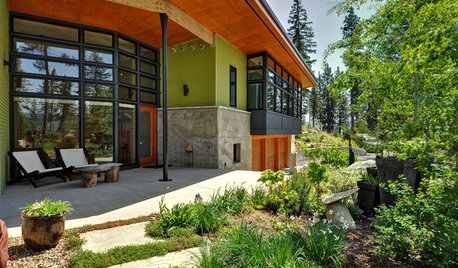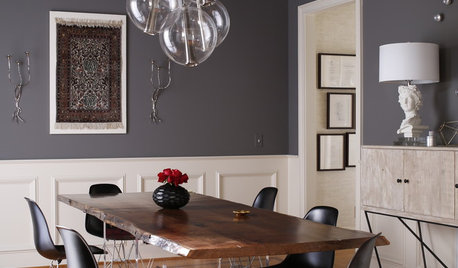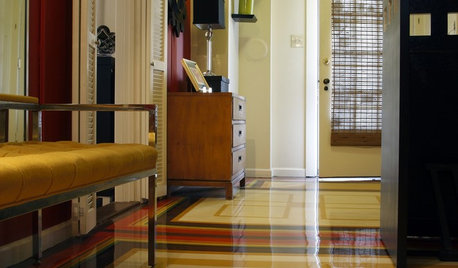These instructions were kindly submitted by members. Thanks to all who contributed!
INSTRUCTIONS FOR HOW TO MAKE HYPERTUFA
To begin, you will need the following:
1. A hypertufa recipe (There are many recipes! See the FAQ for some of the most popular ones.)
2. Fine Particle dust mask
3. Dishwashing gloves
4. Disposable latex or plastic gloves
5. A measuring (parts) container The "parts" container you use is the container you fill with the different ingredients. It can be a cup or a bucket, or anything in between. It is a volume container.
6. A plastic mixing container (a flat plastic pan or tub is preferable to a tall, deep one)
7. A bucket of clear water and a small container to dip the water
8. A prepared mold, form or idea for free form
9. Mold release product, if using a mold
10. Plastic wrap, or old dry cleaner bag or garbage bag to cover your work
11. The time to come back to your project and mist with water when needed
12. A shady place to keep it out of direct heat or sun
13. A barbeque brush, wire brush or other bristle to rough up the surface
14. Carving tools - chisels, files, nails, etc. to carve into the project if you wish
15. Patience for, at the VERY least, several hours to a couple of days, prior to removing your project from the form or mold and finishing the surface
16. Optional: a small tub or wading pool to set your project in to cure after it has dried for a couple days (drying is different from curing). This step allows the hypertufa to gain strength during the curing process.
To any of the recipes, you will need to add water - a little bit at a time until the mix is just wet enough to hold a fist size without much water squeezing out or the mix slumping through your fingers. Let the mix sit a short time so that the additives (peat, perlite, vermiculite, sand, etc.) can soak up a bit of the liquid. Add a little more water, if needed.
If you want to add colorant to any of the mixes, remember that dry colorant is added when all the dry ingredients are mixed. If adding liquid color, add it to your first addition of water.
If you want the mix to be a bit stronger you can add either a small portion of liquid fortifier with the first addition of water or a pinch or two of fiber mesh to the first addition of water, being sure to swirl it around to distribute the fibers (the amount is subject to the size of the project). With fibers, you may end up with a hairy/stubby surface on your finished project. If you do not want a chia pet, burn the fibers off with a small torch.
Be sure to use a release agent in your mold for hypertufa. Another way is to cover your mold with a thin layer of plastic before putting the hypertufa in. Plastic forms can be sparingly coated with concrete mold release, cooking spray, Vaseline, WD40, cooking oil, motor oil, etc.
You can purchase large bags of perlite and vermiculite at a garden warehouse, co-op, concrete spply company, and farming supply stores. The cost savings is very good. Peat, perlite and vermiculite all come in various grades. Choose the grade you like best.
Wear rubber dish gloves when thoroughly mixing your dry ingredients and the wet mix. Use the thinner disposable gloves for finer work.
Use a mask made for fine dust and WEAR IT while measuring and mixing dry ingredients, and whenever you create dust during the finishing process. The mask can be reused several times. Remember that cement is a bonding agent and once in contact with moisture, begins to harden. As you are breathing, in and out, minute amounts of moisture in your lungs mix with the air all the time.
************************************************************************
I mix concrete and hypertufa with my hands, encased in (generic brand) Playtex Living Gloves. Take off your rings, bracelets, watches and necklaces. Put on your FINE particle dust mask and secure it. Keep it on until your mix is finished. You can use tools to mix if you wish, but I have found that there is nothing that mixes better than your hands. You can feel lumps, scrape out corners, turn over the mix, etc. much better with your hands than any other tool.
Mix in a flat, rather than tall pan (dishpans, mortar mixing tubs available at HD or Lowe's, old kiddie wading pools, etc.). It's MUCH easier to move the heavy mix in a flat pan and it is also easier to get into all those nooks and crannies where unmixed stuff hides. Forget 5 gallon pails - they are awkward, my back can't take reaching down into the bottom of those things and if you are mixing a lot of stuff, your gloves won't be long enough.
Whenever possible, mix on a worktable, plywood on sawhorses - anything that brings the mixing up to waist height rather than YOU bending over it.
Measure the portland cement first. If it has hard lumps in it, stop and go buy a fresh bag. It has most likely absorbed moisture and gone bad. Use it at your own risk. Same with the UGH bagged stuff. Always store cement or UGH bagged mix in SEALED plastic containers like rubbermaid or 5 gallon pails (MUCH easier to move). I store mine in doubled plastic bags INSIDE of the SEALED 5 gallon plastic pails. It's humid here...
When mixing concrete or hypertufa, first, thoroughly mix your dry ingredients (even if you use the UGH bagged stuff - it settles). Keep mixing for several minutes until EVERYTHING is mixed through and through. Get into the corners and all over the bottom of your mixing container because the unmixed stuff is hiding there, I assure you!
When the dry stuff is thoroughly mixed, MEASURE your liquid (I REALLY hope you're using an acrylic admix instead of just water...HONEST - it makes a BIG difference) and add HALF of it to the dry stuff. Start mixing. It will be very lumpy and difficult to mix, but do it anyway - squish and squeeze. After all the stuff is EVENLY moistened, add a QUARTER of the REMAINING liquid. Work it in until the mix is evenly moistened. Check those corners and hiding places again, feeling for lumps and moosh them into the mixture. Continue adding liquid in SMALL amounts, mixing thoroughly after each addition, until the mix is the consistancy desired for your project. When in doubt, err on the dry side.
If you are pouring your mix into a mold, as with concrete, the consistancy should be like THICK pancake batter. Brownie mix is too thick and cake batter is too thin. It should be JUST pourable. You should be able to scoop up the mix in your cupped hands and not have any running through your fingers.
If you are making hypertufa for application to a mold, the mix should be thicker than brownie mix - more like soft cookie dough so you can pack it into or onto the mold you are using.
If you are making hypertufa for freeform sculpting or handmolding, the mix should be like REALLY stiff cookie dough.
It is much easier to ADD liquid to a mix that is too thick, than to scramble for dry ingredients to "tighten up" a mix that's too wet. This is PARTICULARLY true with concrete.
Just because you used a certain amout of liquid today does not mean that you will use the exact same amount the next time. Relative humidity of the air and ingredients as well as the temperature have a LOT to do with this. Always measure and ALWAYS start with only HALF the liquid, then gradually add, mixing and mixing after each addition.
Allow the mix to rest for about 10 minutes after it looks "right." Concrete (hypertufa, too) has to go through a stage called hydration, where all the dry stuff is getting wet and beginning to react chemically. With concrete, this is the stage when the mix begins to bubble. This is a good thing. Don't be in such a hurry that you rush this process, or you'll be sorry with hypertufa and REALLY sorry with concrete. "Thump" your mixing container sharply on the ground or worktable (if you're being kind to your back) several times to release air bubbles and settle the mix. The mix should begin getting warmer - this is good - it's chemistry in action.
************************************************************************













Related Discussions
Need some general advice on repotting 1 1/2ft cluster
Q
I need instructions for a good beginner's hypertufa project.
Q
Desert general potting soil mix
Q
BEST HYPERTUFA MIX STRONGEST
Q